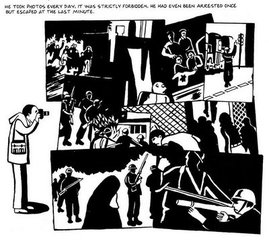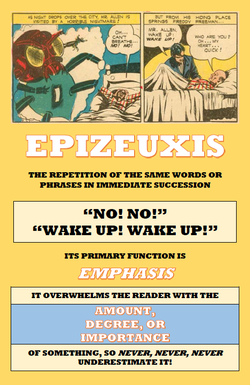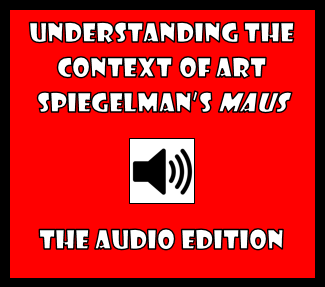Visual Narrative and YouTube, Part 2
3/17/2014
 Chaney also gets into the whole idea of how we tend to process cartoonish representations of the human form in a different way than we would still photography. Photography suggests an image captured in the a past that no longer exists. We know that something in a photograph is not happening to the person "in the here and now" because the photo had to have been previously taken. However, Satrapi's cartooning shows us a character that we, as readers, are willing to believe is in "the present" of the narrative. This is such an insightful idea and one that can generate really excellent discussions with students. Chaney's talk and the ideas it raises also allow for a lot of cross-polination depending on the other writers your students are studying. For example, Margaret Atwood's poetry is filled with references to the problematic nature of photography: how photographs capture an instant in time, but don't tell us what happened to the subject in the time before or the time since the click of the camera's shutter. Think, for instance of "This is a Photograph of Me" or "Girl and Horse, 1928." Satrapi also focuses on photographs as a visual record, with a memorable full-page panel of her father taking photos of the violence, and other panels in which a character is looking at a photograph from the past and pointing out something about it. Chaney's talk, then, is a wonderful starting point for such discussions. Be sure to check it out!
1 Comment
|
Glen DowneyDr. Glen Downey is an award-winning children's author, educator, and academic from Oakville, Ontario. He works as a children's writer for Rubicon Publishing, a reviewer for PW Comics World, an editor for the Sequart Organization, and serves as the Chair of English and Drama at The York School in Toronto. If you've found this site useful and would like to donate to Comics in Education, we'd really appreciate the support!
Archives
February 2019
|



 RSS Feed
RSS Feed
